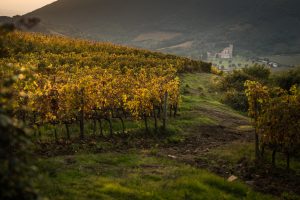
Valpolicella is one of the most important and healthy territories of Italian wine. A land of great reds, which unravels around the beauty of Verona and plunges into the valleys that surround it, from which could come, soon, a new Unesco recognition for Italian wine. Because perhaps, as early as the first half of 2025, under the heading of “Unesco Intangible Cultural Heritage”, the centuries-old, original and ritual technique by which its great wines, starting with Amarone and Recioto, are created could be added, thanks to Valpolicella: the drying, the laying aside of the grapes in the arele (racks used for the breeding of silkworms), so-called “fruttai”, wellaired rooms suitable for assuring the perfect conservation of the bunches, which, through natural dehydration, gives the wines the colors, scents and flavors that are their distinctive traits.
Its process is also the first for the recognition of a winemaking technique, and it now enters its final phase with the official submission of the dossier, which will then be forwarded to the Ministries of Culture and Agriculture and the National Commission for UNESCO, which, by March 30, must choose the Italian candidacy to be sent to Paris. The topic at the center of “Amarone Opera Prima 2023”, an event - which also allows tasting the new 2018 vintage, as well as prestigious old vintages of the “king” of Valpolicella wines - signed by the Consorzio di tutela dei Vini della Valpolicella, staged tomorrow and the day after tomorrow in Verona, a city that is already a Unesco World Heritage Site and holds the record for the largest urban vineyard in Italy, in a perfect synthesis of union between culture and Italian wine, to tell about one of Italy’s most important wine “districts” (in the talk show, tomorrow, on drying techniques & Unesco heritage, communications, among others, by Christian Marchesini, president of Consorzio Vini della Valpolicella, Pier Luigi Petrillo, director of the Unesco Chair on Intangible Cultural Heritage at Unitelma Sapienza University of Rome, Gianmarco Mazzi, Undersecretary at the Ministry of Culture, and Luca Zaia, Governor of the Veneto Region). A land, Valpolicella, where, moreover, according to WineNews rumors, relations between two important souls of the territory, that of the Consortium, and that of Famiglie Storiche, an association that brings together 13 of the territory’s most emblazoned wineries (from Allegrini to Masi, from Speri to Tedeschi, from Tenuta Sant’Antonio to Tommasi, from Begali to Zenato, to Brigaldara, just to name a few) seem to be easing. After after years of rifts, divisions, distant positions, and clashes that ended up in court, there is finally “concrete dialogue” and “steps forward, with disputes being resolved” from the territory. To be celebrated, when it gets there, “ça va sans dire”, by toasting with a glass of Amarone.
That Amarone della Valpolicella which is the diamond of an area where wine moves a turnover of more than 600 million euros, more than half of which comes from the performance of the top red wine, whose prices range from 1,000 to 1,200 euros per hectolitre, when it comes to bulk values. A “treasure” that originates from 8,600 hectares of vines in 19 municipalities, between the Classica, Valpantena and Valpolicella Doc areas, and whose value in Valpolicella Classica is also around 500,000 euros per hectare, and which are for the moment “blocked”. And where more than 2,400 wineries, increasingly led by young people, produced more than 67 million bottles in 2022, including 17.2 million bottles of Amarone alone, almost 7% more than the average of the last five years.
Copyright © 2000/2025
Contatti: info@winenews.it
Seguici anche su Twitter: @WineNewsIt
Seguici anche su Facebook: @winenewsit
Questo articolo è tratto dall'archivio di WineNews - Tutti i diritti riservati - Copyright © 2000/2025